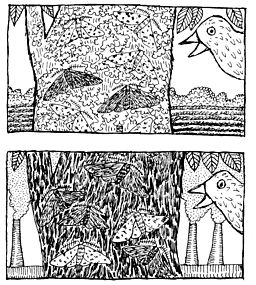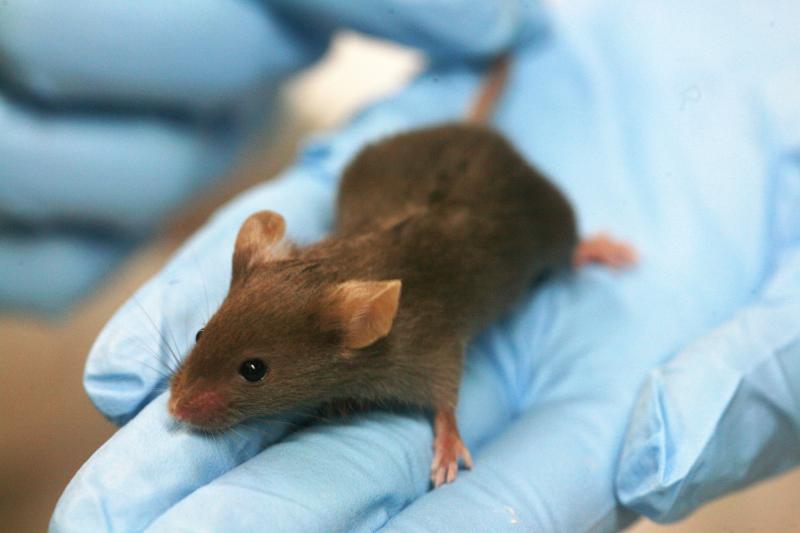A few weeks ago in Misconception Monday, I discussed the all-too-common misunderstanding that individuals evolve. As part of that piece, I attempted to explain why “descent with modification” is a better definition for evolution than the old standard “change over time.” The key point was that descent implies more than one generation. Evolution is broadly defined as a change in the genetic make-up of a population. Genes, we all know, code for traits, or in more science-y terms, genotypes are expressed as phenotypes. Those in the population with favorable phenotypes will tend to survive, reproduce, and pass their genes on to offspring more frequently than those in the population without those favorable phenotypes. In this way, a population’s gene pool shifts as the proportion of individuals in a population with favorable traits tend to increase over generations. This is natural selection 101. (Natural selection being one of the mechanisms of evolution—not the only one, but the one we'll be focusing on here.)
So, what kinds of traits does natural selection act on? Heritable ones. Think about it.  Only traits that are coded for in DNA can be passed from parent to offspring, right? So only those traits coded for by DNA can be affected by natural selection. If you lose a limb in an accident your children will still have all of their limbs because the loss of limb did not affect your DNA—it still has all of the information necessary for all four limbs. A pair of body builders won’t have mini body-builder babies because the muscle tone and strength of a body builder is the result of environment, not genetics. (I know, I know, it’s not purely environment, but it is certainly more environment than genetics. I don’t care what your pedigree, if you don’t work out all the time and live on, like, chia seeds and kale, you aren’t going to ever look like this.)
Only traits that are coded for in DNA can be passed from parent to offspring, right? So only those traits coded for by DNA can be affected by natural selection. If you lose a limb in an accident your children will still have all of their limbs because the loss of limb did not affect your DNA—it still has all of the information necessary for all four limbs. A pair of body builders won’t have mini body-builder babies because the muscle tone and strength of a body builder is the result of environment, not genetics. (I know, I know, it’s not purely environment, but it is certainly more environment than genetics. I don’t care what your pedigree, if you don’t work out all the time and live on, like, chia seeds and kale, you aren’t going to ever look like this.)
Okay. What in the world is my point? The point is that there has recently been a bit of a wrinkle in this core tenet of evolution. It used to be that you could say with confidence that changes brought about by environmental influences over the course of an individual’s lifetime (loss of limb, build-up of muscle mass) are not heritable. But more and more examples of just that—of environmentally affected traits being passed from parent to offspring—have been recently reported in the scientific literature. Earlier this year, for example, Scientific American ran a piece by biologist Michael Skinner that described the phenomena he has studied since 2005. He recounts how mice exposed to a toxin produce male offspring with low sperm count and underdeveloped sex organs. No problem so far, the offspring were developing within the mother’s body and therefore also exposed. But Skinner’s team noted a disproportionate occurrence of these traits in the next two generations. There was no trace of the toxin in these individuals, so what caused the changes? The answer: epigenetics.
Epigenetics isn’t new. The term describes the study of chemical modifications to DNA that affect trait expression. Almost every cell in your body contains a complete set of DNA. Your liver cells, however, do not express the same assortment of proteins that your skin cells express.  Why not? Because gene expression is regulated. Genes that code for things like liver enzymes are dormant in your skin cells. One way to achieve this kind of “off” switch effect is through DNA methylation, in which a kind of “STOP” sign is attached to the DNA upstream of certain genes that prevents the genes from being expressed. (There are other methods of regulation, too, such as acetylation and DNA winding around histone proteins, but this blog is getting long enough—so let’s stick to just methylation, okay?)
Why not? Because gene expression is regulated. Genes that code for things like liver enzymes are dormant in your skin cells. One way to achieve this kind of “off” switch effect is through DNA methylation, in which a kind of “STOP” sign is attached to the DNA upstream of certain genes that prevents the genes from being expressed. (There are other methods of regulation, too, such as acetylation and DNA winding around histone proteins, but this blog is getting long enough—so let’s stick to just methylation, okay?)
 When exposed to a chemical, methylation markers can get added and subtracted, affecting the regulation of gene expression in the mother mouse and developing baby mice. The effect on the baby mice was underdeveloped reproductive systems in the males. This wasn’t surprising, as the chemicals used (a pesticide and a fungicide used in commercial agriculture) were known endocrine disrupters and they were injected into the mother mice right when the reproductive systems were developing in the embryos. The toxins resulted in abnormal methylation patterns in the embryos, which caused irregular gene expression in the developing reproductive system, causing, in turn, reproductive issues when the mice matured.
When exposed to a chemical, methylation markers can get added and subtracted, affecting the regulation of gene expression in the mother mouse and developing baby mice. The effect on the baby mice was underdeveloped reproductive systems in the males. This wasn’t surprising, as the chemicals used (a pesticide and a fungicide used in commercial agriculture) were known endocrine disrupters and they were injected into the mother mice right when the reproductive systems were developing in the embryos. The toxins resulted in abnormal methylation patterns in the embryos, which caused irregular gene expression in the developing reproductive system, causing, in turn, reproductive issues when the mice matured.
But, what happened when a lab assistant accidentally mated two sibling mice that had been exposed to the chemicals in utero was surprising…and we’ll discuss that next week.
Have an idea for a future Misconception Monday or any other kind of post? See some good or bad examples of science communication lately? Drop me an email or shoot me a tweet <at>keeps3.

